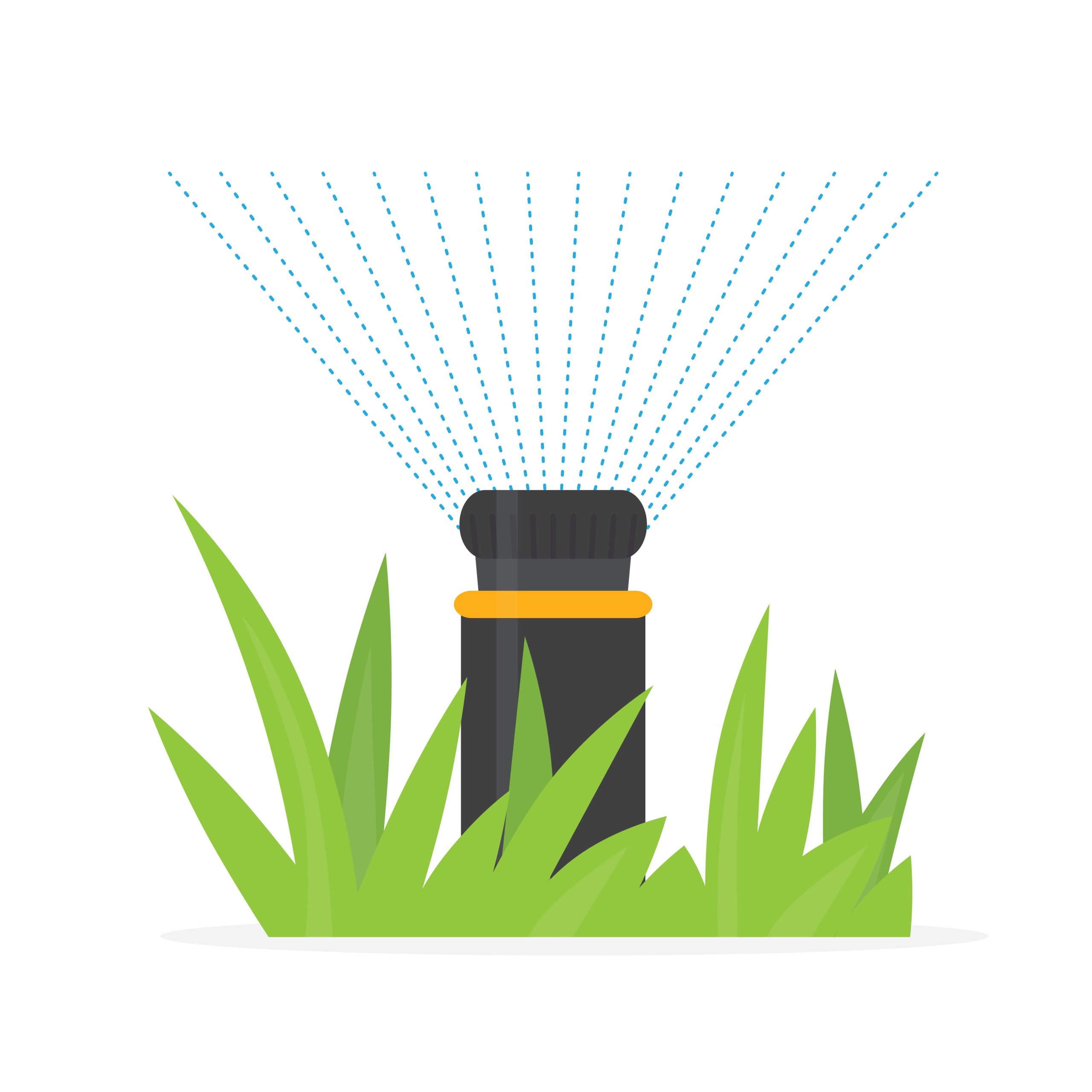Common Sprinkler Issues in The Heights: A Quick Guide
A lush, green lawn is the pride of any homeowner, but keeping it that way requires a healthy and efficient sprinkler system. At The Heights Sprinkler Repair, we understand the importance of maintaining a reliable irrigation system. When your irrigation system starts acting up, it can quickly turn your dream yard into a patchwork of brown spots and puddles. The sounds and signs of a struggling system can be confusing, but understanding the root cause is the first step toward a solution.
This guide will help you decode the signals your sprinkler system is sending. At The Heights Sprinkler Repair, we specialize in diagnosing and fixing these issues to keep your lawn in top shape. We will explore four of the most common sprinkler problems: loud banging noises, mysterious dry spots, unwanted puddles, and a system that just won’t stay on. We’ll provide tips to help you identify these issues and explain why professional help is often the best path to a lasting fix.
What’s That Noise? Understanding Water Hammer
Have you ever heard a loud banging or knocking sound from your pipes right after your sprinkler system shuts off? That jarring noise is called water hammer. It happens when flowing water is forced to stop abruptly, sending a shockwave through your plumbing. While it might just seem like a noisy annoyance, water hammer can cause serious damage over time, leading to weakened pipe joints and costly leaks.
What Causes Water Hammer?
- High Water Pressure: If your home’s water pressure is too high, the force of the water stopping is much greater, increasing the likelihood of water hammer.
- Quick-Closing Valves: Modern sprinkler valves are designed to shut off quickly. This efficiency can sometimes be the source of the problem, as it leaves the moving water with nowhere to go.
- Air in the Pipes: Trapped air pockets can compress and decompress as water flows, creating a similar hammering effect.
How to Address It
A simple first step is to check your home’s overall water pressure. You can buy a pressure gauge at a hardware store to test it yourself. If the pressure is above 80 PSI, it’s too high. While you might be tempted to adjust the pressure yourself, improper adjustments can cause more problems. The safest and most effective solution is to have a professional install a water hammer arrestor. This device acts as a shock absorber, cushioning the blow when the water stops and protecting your pipes from damage.
The Mystery of Dry Spots
One of the most frustrating sprinkler issues is seeing brown, dry patches on your lawn, especially when the rest of it is green. These dry spots are a clear sign that part of your yard isn’t getting the water it needs. The cause can range from simple obstructions to more complex system failures.
Why Are Dry Spots Appearing?
- Blocked or Clogged Sprinkler Heads: Dirt, grass clippings, and other debris can easily clog the small nozzles on sprinkler heads, preventing water from spraying out.
- Misaligned Heads: Sprinkler heads can get knocked out of alignment by lawnmowers, foot traffic, or shifting soil. A head pointing at the sidewalk instead of the grass is a common culprit.
- Poor Coverage: Your system may have been designed without enough “head-to-head” coverage, meaning the spray from one sprinkler doesn’t reach the next, leaving gaps in between.
- Low Water Pressure: If the pressure is too low, the water won’t spray as far as it’s supposed to, causing the outer edges of a zone to dry out.
What You Can Do
Start by inspecting the sprinkler heads in the affected area. Clean out any visible debris from the nozzles. Turn the system on and observe the spray pattern. You may be able to gently twist a misaligned head back into the correct position. If cleaning and realigning don’t solve the problem, you could be facing a pressure issue or a design flaw. A professional can assess your system’s layout, check for underground leaks causing low pressure, and ensure every inch of your lawn gets the hydration it needs.
Tackling Puddles and Pooling Water
On the flip side of dry spots is puddling. If you notice swampy areas on your lawn or water accumulating on your driveway long after the sprinklers have turned off, you have a problem. Puddling not only wastes a significant amount of water but can also drown your grass, lead to fungal diseases, and create a breeding ground for pests.
Common Causes of Puddling
- Leaking Sprinkler Heads: The seal at the base of a sprinkler head can wear out over time, causing water to constantly seep out, even when the system is off.
- Broken Lines: Underground pipes can crack due to freezing temperatures, tree roots, or accidental damage from digging. This is a major cause of significant water loss and large, soggy patches.
- Misdirected Spray: A sprinkler head aimed at a low spot, a wall, or the pavement will cause water to collect instead of being absorbed into the soil.
- Runoff from High Ground: Poor landscape grading can cause water to run from higher areas and pool in lower spots.
How to Stop the Puddles
Look for the lowest-lying head in the puddled area, as this is often where water leaks from when the system is off. If you see water bubbling up from the ground or an unusually green, wet patch, you likely have a broken pipe underground. Fixing underground leaks is a complex job that requires locating the break, digging up the pipe, and making a secure repair. To avoid further damage and ensure the job is done right, it’s best to call in a professional.
Why Your System is Short Cycling
Does your sprinkler system turn on for a minute, shut off, and then turn back on again a short time later? This is known as short cycling. This erratic behavior prevents your lawn from getting the deep, thorough watering it needs for healthy root growth. It also puts excessive wear and tear on your system’s components, particularly the pump and valves.
What Leads to Short Cycling?
- Faulty Controller: The “brain” of your system, the controller, could be malfunctioning due to an electrical issue or age.
- A Failing Master Valve or Pump Relay: These components control the water flow for the entire system. If they are failing, they can cause the system to shut down intermittently.
- Inadequate Water Flow: If the system is trying to draw more water than is available, a safety sensor might shut it down to prevent the pump from running dry.
Restoring Normal Operation
First, try resetting your controller according to the manufacturer’s instructions. Check the programming to ensure there are no overlapping start times or confusing schedules. If a reset doesn’t work, the issue is likely more technical. Short cycling often points to a problem with the electrical components or water supply that requires an expert diagnosis. A professional technician can safely test the controller, valves, and wiring to pinpoint the fault and prevent premature system failure.
When to Call the Professionals at The Heights Sprinkler Repair
While some minor sprinkler issues can be handled with a little DIY effort, many problems require specialized knowledge and tools. Incorrect repairs can lead to bigger leaks, more damage, and higher water bills. A professional can diagnose problems accurately, from a complex electrical fault to a hidden underground leak.
At The Heights Sprinkler Repair, we have the experience to solve these common issues and more. Our team is dedicated to providing reliable, long-term solutions that keep your irrigation system running efficiently and your lawn looking its best. Don’t let sprinkler problems ruin your yard.
Ready for a healthy, beautiful lawn? Contact The Heights Sprinkler Repair today for an expert evaluation and fast, effective service!

